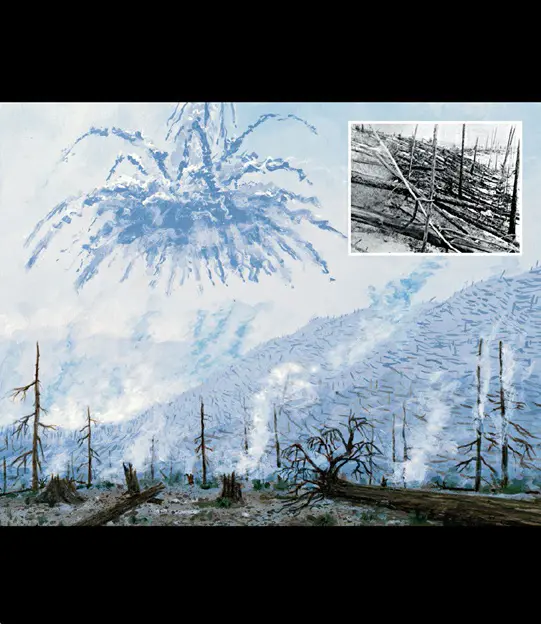The Tunguska Event of 1908 remains one of the most extraordinary and mysterious occurrences in the history of planetary science. On June 30, 1908, residents near the Tunguska River in central Siberia were jolted awake by a blinding flash and thunderous explosions, akin to a magnitude 5.0 earthquake. The aftermath was staggering: 80 million trees were flattened over an area of 811 square miles, seismic shocks were felt across Asia and Europe, and the night sky glowed mysteriously for days.
Initial hypotheses pointed to a meteoroid impact, but the lack of an impact crater perplexed scientists. It wasn’t until 1927 that Leonid Kulik, a Russian mineralogist, led the first scientific expedition to the site. Kulik’s inability to find a crater suggested that the Tunguska event was an airburst explosion, caused by shock waves, heat, and fire from an object that disintegrated in the atmosphere.
For over a century, the nature of the Tunguska impactor has been a topic of debate among planetary scientists. Was it a fragment of an icy comet or a small, rocky asteroid? The prevailing theory posits that a relatively small object, around 33 feet in diameter, exploded about 6 miles above the surface with the energy of 10 megatons of TNT, creating effects similar to those at Meteor Crater in Arizona, yet far exceeding the power of a World War II atomic bomb.
The Tunguska event gained a contemporary parallel in 2013 with the Chelyabinsk meteor explosion over Russia. While both events caused no fatalities, they highlight the profound impact small celestial bodies can have when colliding with Earth at high speeds. These events serve as crucial reminders of the potential for catastrophic shock-wave effects from space objects.

